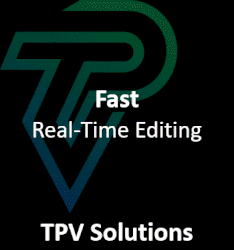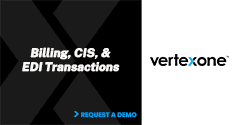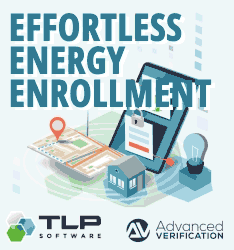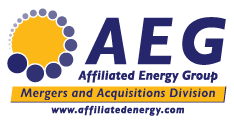|
|
|
|
|
Reliant Proposes Threshold That Would Trigger Review Of Sought Compensation To LSE-Linked Generators Due To ERCOT HDL Overrides, After Consumer Opposition To Payments
The following story is brought free of charge to readers by VertexOne, the exclusive EDI provider of EnergyChoiceMatters.com
As ERCOT stakeholders further consider an NPRR which would expand payments to generators, linked to serving specific load, who are directed by ERCOT to reduce output under a High Dispatch Limit (HDL) override, Reliant proposed an annual cost threshold that would trigger an obligation for ERCOT to report on the causes of the payments and recommendations to reduce such payments
NPRR 1190, which has been previously considered by the ERCOT Board and sent back to TAC, would, as stated in the NPRR memorandum, add a provision, "for recovery of a demonstrable financial loss arising from a manual High Dispatch Limit (HDL) override to reduce real power output, in the case when that output is intended to meet Qualified Scheduling Entity (QSE) Load obligations."
As originally drafted (and sponsored by several NOIEs), the NPRR was intended to provide compensatory payments to Non Opt-In Entities, who use generation to serve their captive customers, for instances in which ERCOT directs (via HDL override) a generating unit to reduce output, in cases where such generating unit is used to serve, physically or financially, such captive load (including instances in which the generation revenue is used as an offset for market purchases by the NOIE)
Although QSEs in the current protocols are eligible for payments due to HDL overrides under certain conditions, the original NPRR would have clarified and expanded that NOIEs would be eligible for payments due to a reduction in their generation used to serve load due to an HDL override, with eligibility for an HDL override payment arising from, among other things, "[i]ncremental costs incurred by a NOIE in the Real-Time Market (RTM) to serve its Load," due to the HDL override
The sponsors of the NPRR (which include Austin Energy, CPS Energy, and other NOIEs) had stated, "The revision accounts for a compensable demonstrable financial loss when such loss is incurred by a NOIE due to ERCOT-instructed generation curtailment by an HDL override, and when revenue from that generation is regularly used to offset costs associated with serving that NOIE’s Load".
As the NPRR was being considered, Reliant argued that allowing only NOIEs to access payments, for HDL overrides at generation serving load, is unfair. Reliant proposed that any QSE that becomes short in covering its load due to an HDL override should be eligible for the HDL override payments
Reliant proposed that eligibility for an HDL override payment should include, "Incremental costs incurred by a QSE in the Real-Time Market (RTM) to serve its Load if the HDL override for a Resource in the same QSE portfolio as the Load, [sic] causes the QSE to be short energy compared to its Load for the intervals affected by the HDL override[.]"
Various consumer interests opposed NPRR 1190, calling HDL override payments contrary to the nodal market's design
The Joint Consumers argued that NPRR 1190 would, "force consumers to subsidize insufficient hedging by other Market Participants in the face of changing grid conditions." The Joint Consumers include Lyondell Chemical, Texas Industrial Energy Consumers, and Residential Consumers. OPUC also opposed NPRR 1190
The Joint Consumers said that ERCOT uses High Dispatch Limit (HDL) overrides to dispatch a generator down due to a reliability issue, "that the generator is at least partially causing, but the issue cannot be resolved by Security-Constrained Economic Dispatch (SCED)."
The Joint Consumers argued that a key policy behind the adoption of the nodal market, "was to avoid paying generation owners for power that was scheduled but not deliverable."
The Joint Consumers said that, prior to nodal, "the ERCOT zonal market design operated under an approach that 'all schedules must flow' and that Market Participants could be compensated with 'OOME Down' payments for any portion of the scheduled power that was not deliverable. Ultimately, the PUCT deemed the OOME payment approach untenable in the long run and ordered ERCOT to institute nodal pricing instead, putting the risk of power delivery on Market Participants. This is known as the direct assignment of congestion costs, which is reflected in the Real-Time nodal pricing at a particular generator node or set of nodes. Through this rule, the PUCT instituted a policy that no market participant has an absolute right to flow power across the grid under all circumstances."
The Joint Consumers said, "In the nodal market, HDL override payments are unnecessary. Functionally, the payments will force consumers to subsidize Market Participants when grid conditions require curtailment. Market Participants have access to alternative sources of power through purchases in the liquid commercial bilateral power market and have the capability to make arrangements in advance to handle a wide range of contingencies that might hinder the delivery of power from an owned or contracted Resource. Just as other consumers would not pay for a generator if SCED did not deploy a Resource at its full output, other power consumers should not have to subsidize Resources that are dispatched down due to HDL overrides."
In newly filed comments, Reliant has now proposed a $10 million annual cost threshold for HDL override payments which, if exceeded, would trigger an ERCOT review and recommendations for changes in HDL override payments
Reliant proposed that, "If the total Settlement amount of High Dispatch Limit Override Energy Payment exceeds $10 million in a calendar year, ERCOT will report to the Technical Advisory Committee (TAC) the causes of the payments and provide recommendations on how to reduce the costs both operationally and based on the eligible demonstrable financial loss criteria [set forth in the protocols]."
Reliant said that the cost threshold would trigger a review of both the operational and Settlement aspects of HDL override payments
"The $10 million threshold is based on historical annual HDL override payments and set at the higher end of observed annual Settlement costs to justify review. If the threshold is exceeded, the review process will focus on changes related to operational and eligible demonstrable financial loss criteria to reduce costs," Reliant said
ADVERTISEMENT Copyright 2025 EnergyChoiceMatters.com. Unauthorized copying, retransmission, or republication
prohibited. You are not permitted to copy any work or text of EnergyChoiceMatters.com without the separate and express written consent of EnergyChoiceMatters.com
January 30, 2025
Email This Story
Copyright 2025 EnergyChoiceMatters.com
Reporting by Paul Ring • ring@energychoicematters.com
NEW Jobs on RetailEnergyJobs.com:
• NEW! -- Manager / Director of Sales, PJM Commercial
|
|
|
|
|









